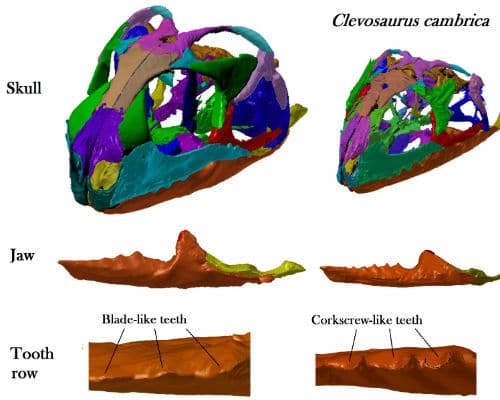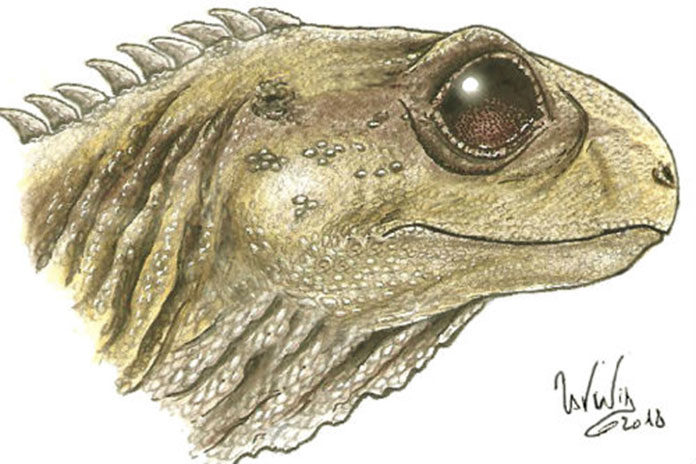Clevosaurus was a lizard-like reptile, an early representative of an ancient group of reptiles called Rhynchocephalia. It was particularly widespread and diverse, surviving the Triassic-Jurassic extinction and being known from numerous species.
Though Well-preserved cranial remains of a small sphenodontian lepidosaur from the Upper Triassic Caturrita Formation of Rio Grande do Sul, Brazil, are the first record of the genus Clevosaurus Swinton, 1939 from South America.
Since then, similar beasts have been found elsewhere around Bristol and in South Wales, as well as in China and North America.
In a new project, Sofia Chambi-Trowell, a student at the University of Bristol has digitally reconstructed the skulls of two species of ancient reptile that lived in the Late Triassic. Those two species were: Clevosaurus hudsoni, the first species to be named, and Clevosaurus cambrica, which was named from a quarry site in South Wales in 2018.

Credit: Image from the CT scan data, produced by Sophie Chambi-Trowell.
For the work, Sofia used two partially fragmented fossil skulls and CT scanned them to reconstruct their original appearance in 3D. She found evidence that the two species, some 205 million years ago, showed significant differences.
Sofia said: “I found that Clevosaurus cambric was smaller overall and had a narrower snout than Clevosaurus hudsoni.”
“Other differences include the number, shape, and size of the teeth in the jaws, suggesting the two species fed on different food.”
Professor Mike Benton, one of Sofia’s project supervisors, added: “Sofia’s work is a great example of how modern technology like CT scanning can open up information we would not know about.
“It took a lot of work, but Sofia has uncovered a good explanation of how many species of Clevosaurus could live side by side without competing over food.”
Her other supervisor, Dr David Whiteside, said: “Two hundred million years ago, Bristol lay much further south than it does today – about the same latitude as Morocco.
“Also, sea level was higher, so the peaks of limestone hills south of Bristol and in South Wales were islands, like Florida today.
“They were full of dinosaurs, early mammals, and rhynchocephalians feeding on the rich, tropical plants and insects. Sofia’s work helps us understand so much about this extraordinary time when dinosaurs were just taking over the world.”
The work is published in the Acta Palaeontologia Polonica 64.
